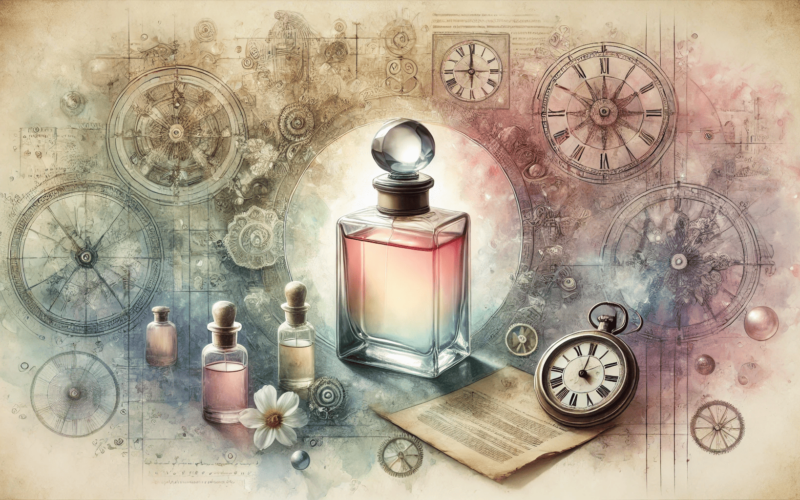Perfume samples can be not only collections of scents, but also carriers of historical memory. These scents are able to transport us to certain moments of the past, evoking associations with the most important events that shaped culture and society. For perfumers, as well as for researchers of historical processes, fragrance is a kind of window into the past, able to refresh memories of those periods that changed the course of history. Like radio-controlled aircraft models in rescue operations, each fragrance also has its own function: it transmits information about time, events and people.
The history of perfumery is inextricably linked with the influence of great personalities who left their mark on world culture. Inspired by significant figures, such scents can convey the atmosphere of that time, whether it is an era of greatness or tragedy. Some compositions become symbols of important cultural changes, celebrating the influence of revolutionaries, politicians and artists. The exciting power of these scents lies in their ability to act as memory vehicles, allowing every moment of history to be relived.
Perfume samples inspired by real events not only give you a unique experience, but also allow you to better understand cultural and historical processes. Each fragrance carries a special meaning that is passed down from one generation to the next. Aromas become cultural monuments, conveying important moments from the past that can’t be preserved in any other way. These unique compositions create a space for reflection on how smells and history are intertwined in one whole.
Scents created in honor of historical epochs
When perfumers decide to create a composition inspired by a historical era, they often use symbols and images of a particular culture. For example, Renaissance scents often include notes of noble woody scents, plum or jasmine, symbolizing the flourishing of art and science. These scents remind us of the time of great artists and philosophers who opened up new horizons for human thought. Each note in such compositions carries the symbolism of the era, conveying the spirit of the time through smells.
There are many examples in history when perfumers were inspired by important political events, such as revolutions or wars. For example, scents dedicated to the French Revolution may contain notes of lavender or citrus, which symbolize freshness and renewal, while scents from the Second World War contain strong, rich scents of wood and leather, which reflect tension and struggle. These compositions play an important role in restoring historical memory, allowing people to relive moments of the past through smells. Those who are interested in history through perfumery can learn much more about the past than through books.
Thereare also scents dedicated to great personalities who have influenced the development of culture. Such scents, as a rule, reflect the character and personal qualities of a particular person. For example, perfumes created in honor of famous queens, artists, or philosophers may include notes related to their personal preferences or places where they lived and worked. Each such fragrance is a personal interpretation of those historical figures who represent entire epochs.
Scents associated with great events
Perfume can be a powerful way to capture the spirit of historical events. Many scents inspired by real events not only symbolize the moment, but also recreate the atmosphere of those days. For example, fragrances dedicated to revolutions often convey the experiences of people fighting for freedom and change. These compositions become a kind of tribute to the memory of the great changes that took place in the past, when every smell was saturated with ideals, struggle and hope.
One of the most striking examples of such scents is the collection dedicated to military events. These perfumes include heavy woody and leather notes that symbolize the harsh realities of war. They can evoke associations with the spirit of survival, struggle and self-sacrifice. The scents associated with the warcarry not only memories of tragedies, but also the strength of the spirit of people who survived these trials. In such compositions, there are combinations that allow you to convey the emotional background of those times.
- Woody notes symbolizing strength and resilience.
- Leather accents that remind you of protective elements and war.
- Spicy notes associated with a sense of tension and struggle.
- Resinous and smoky accents that create an atmosphere of destruction and restoration.
Each of these scents carries a piece of historical memory and helps to transport us to those times when human destinies were intertwined with the greatest world events. With the help of perfume samples inspired by such moments, we can feel how scents can recreate even the most difficult and tragic epics of history.
The role of fragrance in reflecting historical periods
Odors play a significant role in the perception of historical periods. They can be not just a memory of time, but also a direct reflection of cultural and social changes. Each historical stage was associated with the aromas that accompanied people’s everyday life, from food and clothing to the surrounding atmosphere. Scents from the past can be the key to a deeper understanding of events and their impact on society.
One of the most striking examples is the role of odors in revolutions. At times of political change, such as the French Revolution or the October Revolution in Russia, certain odors, such as smoke from bonfires or the smell of gunpowder, became symbols of the struggle. This creates associations that are still relevant in the mass consciousness, creating vivid images in the cultural memory. Odors thus serve as important markers for identifying historical periods.
In addition, the odors of an era can be associated with specific geographical and social conditions. For example, the smells of cities that rose or fell at different times played an important role in the perception of their life. Aromas of labor, trade, new industry or, conversely, ruin and decline become part of the collective memory and culture of that time.
The significance of historical scents for cultural heritage
Historical scents not only represent a memory of the past, but can also be an important element of cultural heritage. Modern research and restoration of ancient smells give us the opportunity to recreate the atmosphere of bygone eras more fully. Recreating scents allows you to feel a connection with history and more deeply perceive the features of a particular cultural environment. This is an important step in preserving not only tangible monuments, but also intangible cultural elements.
The use of scents in the context of cultural objects makes it possible to recreate forgotten details, such as the smells of ancient Greek temples or Roman baths. Such smells not only reproduce the atmosphere, but also convey symbols and emotional associations. The historical aroma can be restored with the help of modern technologies and special equipment, which opens up new horizons for museums and cultural centers. This gives you a chance to attract visitors to a deeper immersion in the culture.
In addition, historical flavors can be used for educational purposes. Museums, cultural institutions, and even educational institutions are starting to use scents as part of educational projects. In this way, they not only preserve the memory of the past, but also contribute significantly to the understanding and appreciation of cultural heritage for future generations.
Questions and answers
Scents often become symbols of historical periods, reflecting cultural, social, and political changes. For example, in revolutionary times, the smells of smoke, gunpowder, or food associated with specific events leave a deep impression on the mass consciousness.
Historical scents are scents that were characteristic of certain periods or places, they preserve the memory of time and help to recreate the atmosphere of bygone eras. Modern technologies allow us to restore these odors and use them for cultural and educational purposes.
Scents from the past are restored using technologies that allow you to recreate smells for museums and educational institutions. This allows viewers and students to immerse themselves in the atmosphere of historical time and to better understand cultural features.

